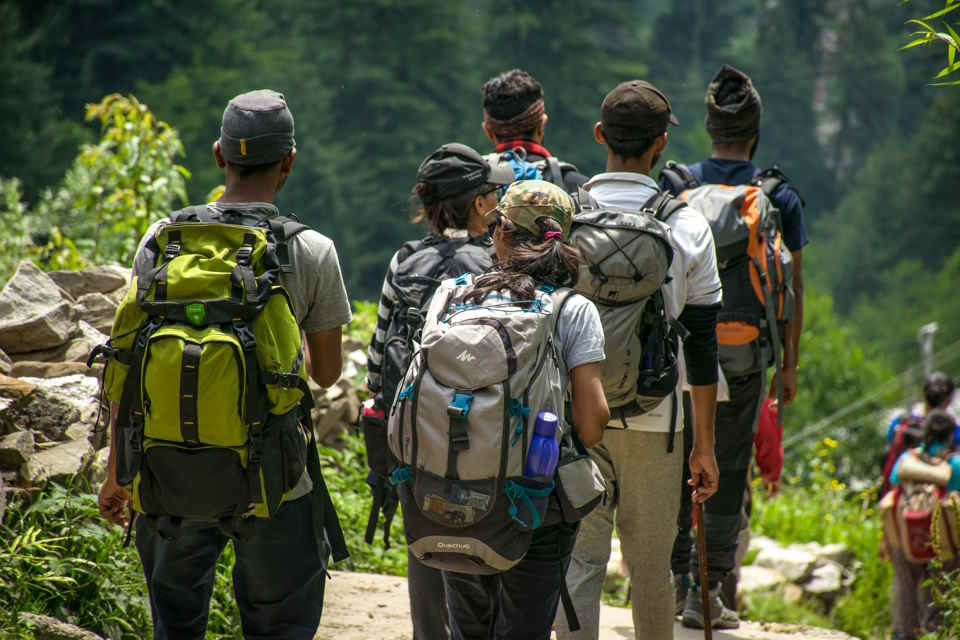Embarking on a hiking adventure can be an incredibly rewarding experience, allowing you to disconnect from the hustle and bustle of everyday life. However, before strapping on your boots and hitting the trails, there are a few crucial steps to ensure a successful and enjoyable journey. From choosing the right hiking destination to researching the terrain and difficulty level, to preparing a comprehensive packing list and creating a detailed itinerary and route plan, this blog post will guide you through every aspect of planning your next hiking expedition. Get ready to embark on an unforgettable adventure in the great outdoors.
Choosing The Right Hiking Destination
Choosing the right hiking destination is crucial for a successful and enjoyable adventure. Whether you are a seasoned hiker or a beginner, selecting the perfect location requires careful consideration. There are numerous factors to take into account, such as the level of difficulty, the terrain, and the scenery. So, how can you ensure that you make the right choice?
Firstly, think about your hiking experience and ability. Are you a novice hiker looking for an easy trail, or are you an experienced trekker seeking a more challenging expedition? It is important to be realistic about your fitness level and capabilities, as tackling a trail that is too difficult can lead to frustration and fatigue. On the other hand, choosing a trail that is too easy may not provide enough of a challenge to keep you engaged and motivated. Finding the right balance is key.
Secondly, take into consideration the terrain. Do you prefer hiking in lush forests, along rugged coastlines, or up majestic mountains? Each type of landscape offers a unique experience and presents its own challenges. If you enjoy being surrounded by towering trees and the sounds of wildlife, a forested trail might be the perfect choice for you. Alternatively, if you are in awe of panoramic views and crave a sense of adventure, a mountainous hike might be more suitable. Researching different terrains and their characteristics will help you narrow down your options.
Lastly, think about the scenery and what you hope to see during your hike. Are you looking for breathtaking vistas, hidden waterfalls, or perhaps historical landmarks? Consider your personal preferences and what inspires you. Some hikers are driven by the desire to connect with nature and marvel at its beauty, while others are motivated by discovering hidden gems and immersing themselves in local history. Understanding your own interests and aspirations will guide you towards the most suitable hiking destination.
| Factors to Consider | Importance |
|---|---|
| Difficulty level | High |
| Terrain | Medium |
| Scenery | Medium |
Researching The Terrain And Difficulty Level
When it comes to planning an adventurous hiking trip, one of the key factors to consider is the terrain and difficulty level. Whether you are a novice hiker or an experienced trekker, it is important to choose a trail that matches your fitness level and hiking abilities. Researching the terrain and difficulty level beforehand can save you from unnecessary surprises and ensure a more enjoyable hiking experience.
One of the best ways to research the terrain and difficulty level of a hiking trail is by reading online reviews and forums. There are countless resources available where hikers from all around the world share their experiences and provide valuable insights about different trails. These firsthand accounts can give you a good idea about what to expect in terms of the trail conditions, elevation gain, and any challenging sections along the way. Keep an eye out for keywords such as “steep,” “technical,” or “scrambling” to gauge the difficulty level.
In addition to online research, it is also helpful to consult topographical maps and hiking guides. These resources provide detailed information about the trail’s elevation profile, landmarks, and points of interest. By studying the maps, you can identify areas that might be particularly challenging or require special equipment. For example, if a trail includes a steep ascent or descent, you might need trekking poles or special footwear to navigate safely. Likewise, if there are river crossings or rocky patches, you can prepare accordingly by bringing waterproof gear and sturdy hiking boots.
- Researching a trail’s difficulty level also involves considering the weather conditions. Even the easiest trails can become treacherous during inclement weather or extreme temperatures. Keep in mind that trails at higher elevations can be more exposed to strong winds, sudden temperature drops, or even snowfall. It is important to check the weather forecast for your hiking destination and pack appropriate clothing and gear. Don’t forget to layer up, bring a raincoat, and pack extra warm clothing if needed.
- Lastly, talking to fellow hikers or seeking advice from local hiking clubs can be extremely valuable. They can provide you with first-hand information about a particular trail’s difficulty level and share tips and recommendations for a successful hike. Their insights can help you understand if a certain trail is suitable for your fitness level or if you need to train or prepare more before attempting it.
| Things to consider when researching the terrain and difficulty level: |
|---|
| Online reviews and forums: Read about hikers’ experiences and look for keywords indicating difficulty. |
| Topographical maps and hiking guides: Study elevation profiles and identify challenging sections. |
| Weather conditions: Check the forecast and pack appropriate clothing and gear. |
| Talk to fellow hikers: Get advice from experienced hikers or local hiking clubs. |
By thoroughly researching the terrain and difficulty level of a hiking trail, you can ensure a more enjoyable and safe adventure. Remember, it’s important to choose a trail that suits your abilities and fitness level to make the most out of your hiking experience.
Preparing A Comprehensive Packing List
When it comes to going on a hiking trip, one of the most important things to consider is the packing list. It can be easy to overlook some essential items, but proper preparation is key to a successful and enjoyable adventure. So, grab your backpack and let’s dive into the world of packing lists!
First and foremost, you need to ensure that you have the right backpack for your hiking needs. The size and capacity of your backpack will depend on the length and difficulty level of your hike. A larger backpack is necessary for multi-day hikes, while a smaller one is suitable for day hikes. Remember, comfort is crucial, so opt for a backpack with adjustable straps and a padded hip belt.
Next, let’s talk clothing. Layering is the name of the game when it comes to hiking. Start with a moisture-wicking base layer to keep you dry, followed by an insulating layer for warmth, and top it off with a waterproof and breathable outer layer. Don’t forget your hiking boots or shoes, and make sure they are broken in before your trip to avoid painful blisters!
- Now, let’s move on to the essentials that you should always have in your hiking backpack:
- Map and Compass: Even if you have a GPS device or smartphone, it’s essential to have a physical map and compass as a backup. Technology can fail, but these trusty tools will always guide you in the right direction.
- First Aid Kit: Accidents can happen, so it’s crucial to have a well-stocked first aid kit. Include items such as band-aids, adhesive tape, pain relievers, antiseptic wipes, and any personal medications you may need.
- Snacks and Water: Hiking can be physically demanding, so it’s vital to stay hydrated and fueled. Pack plenty of water and high-energy snacks like granola bars, trail mix, and dried fruit.
- Sun Protection: Protect your skin and eyes from the sun’s harmful rays by packing sunscreen, sunglasses, and a wide-brimmed hat. Don’t forget to reapply sunscreen throughout the day, especially if you’re hiking at high altitudes.
Lastly, don’t forget to bring some miscellaneous items that can enhance your hiking experience. A headlamp or flashlight is essential for navigating in low-light conditions, while a whistle can be a handy signaling device in case of emergencies. And of course, don’t leave behind your trusty camera to capture all the breathtaking views you’ll encounter on your hike!
| Essentials Checklist: | Optional Items: |
|---|---|
| Trekking poles | Binoculars |
| Multi-tool or Swiss Army knife | Hiking guidebook |
| Extra clothing for layering | Portable camping stove |
| Waterproof backpack cover | Hammock |
| Extra socks | Insect repellent |
Remember that every hiking trip is different, so adapt this packing list according to your specific needs and the environment you’ll be exploring. Being well-prepared will ensure that you have a safe and enjoyable hike. So, pack your bags, put on your hiking boots, and embark on an unforgettable adventure!
Creating A Detailed Itinerary And Route Plan
Planning a hiking trip involves more than just choosing the right destination and packing the essentials. Creating a detailed itinerary and route plan is crucial to ensure a successful and enjoyable outdoor adventure. Not only does it help you stay organized, but it also maximizes your time, allows for flexibility, and enhances your overall safety. So, let’s dive into the nitty-gritty of creating an itinerary and route plan that will make your hiking experience truly memorable!
First and foremost, research is key when it comes to creating a detailed itinerary and route plan. Start by gathering as much information as possible about your chosen hiking destination. Look for reliable sources such as travel blogs, guidebooks, or local hiking forums. Pay attention to factors like weather conditions, terrain difficulties, and any potential safety hazards that you might encounter along the way. By being well-informed, you’ll be better prepared to tackle any challenges that come your way.
Once you have gathered all the necessary information, it’s time to outline your itinerary. Start by deciding on the duration of your hiking trip. Consider how many days you have available and how much ground you want to cover each day. Remember, it’s important to be realistic and account for rest days or unexpected delays. Next, break down your hike into manageable sections or stages. Consider factors such as the distance, elevation gain, and any notable landmarks you wish to visit. Creating a detailed daily plan will not only help you stay on track but also give you a sense of accomplishment as you tick off each milestone.
Now that you have your itinerary in place, it’s time to plan your route. Study the maps of your chosen destination and mark the trails or paths you intend to follow. Take note of any alternative routes or shortcuts that you may want to consider. Additionally, look for potential rest stops, water sources, and camping areas along the way. This will enable you to plan for proper breaks and ensure you have access to essential amenities during your hike. Remember, it’s always better to be over-prepared than under-prepared, so pack extra supplies if needed.
In conclusion, creating a detailed itinerary and route plan is crucial for a successful hiking trip. By thoroughly researching your destination, outlining a realistic and achievable itinerary, and planning your route carefully, you’ll be well-prepared to embark on an unforgettable adventure. So, get your hiking boots ready, grab your gear, and start planning your next hiking expedition with confidence!








